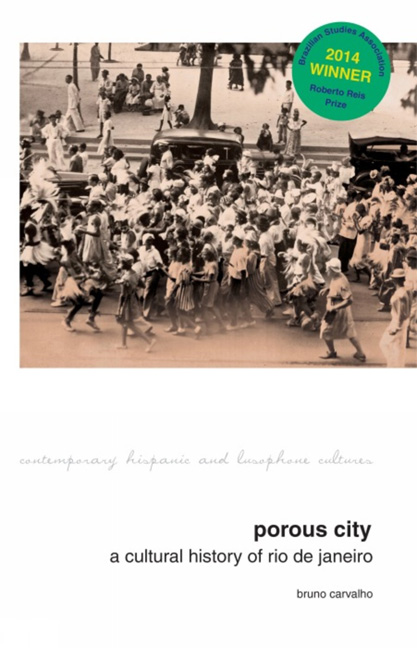Book contents
- Frontmatter
- Contents
- List of Maps
- List of Figures
- A Note on Translation
- Preface
- Introduction: In Search of Things Past: Mapping Rio
- 1 At the Centre of an Imperial Capital: Swamps, Yellow Fever, and Gypsy Parties
- 2 A Master on the Periphery of a Periphery: Popular Music, Streetcars, and the Republic
- 3 Beyond the Belle Époque: On the Border of a ‘Divided City’
- 4 Afro-Jewish Quarter and Modernist Landmark
- 5 Writing the ‘Cradle of Samba’: Race, Radio, and the Price of Progress
- 6 ‘It's (Mostly) All True’: The Death of a Neighbourhood and the Life of Myths
- Conclusion: The Future Revisited: Where Has the Past Gone and Where Will it Go?
- Acknowledgements
- Works Cited
- Index
3 - Beyond the Belle Époque: On the Border of a ‘Divided City’
- Frontmatter
- Contents
- List of Maps
- List of Figures
- A Note on Translation
- Preface
- Introduction: In Search of Things Past: Mapping Rio
- 1 At the Centre of an Imperial Capital: Swamps, Yellow Fever, and Gypsy Parties
- 2 A Master on the Periphery of a Periphery: Popular Music, Streetcars, and the Republic
- 3 Beyond the Belle Époque: On the Border of a ‘Divided City’
- 4 Afro-Jewish Quarter and Modernist Landmark
- 5 Writing the ‘Cradle of Samba’: Race, Radio, and the Price of Progress
- 6 ‘It's (Mostly) All True’: The Death of a Neighbourhood and the Life of Myths
- Conclusion: The Future Revisited: Where Has the Past Gone and Where Will it Go?
- Acknowledgements
- Works Cited
- Index
Summary
A boundary is not that at which something stops but, as the Greeks recognized, the boundary [peras] is that from which something begins its presencing.
Martin Heidegger, ‘Building, Dwelling, Thinking’In 1890, Aluísio Azevedo published the now classic O Cortiço, a mark of naturalism in Brazilian literature.1 The novel constitutes a microcosm of Rio de Janeiro's society: the cast of characters includes the bourgeoisie, an ambitious vendor, exploited workers, vagabonds, and musicians. It concentrates on the portrayal of life in the precarious lodging of the title, inhabited by scores of Portuguese and Italian immigrants, mulatos, and freed-persons, often presented in the zoomorphic descriptions common to the naturalist aesthetic. In the novel's opening sentence, Azevedo locates it in the South Zone neighbourhood of Botafogo, where João Romão becomes the owner of a small shop that would propel the development of his formidable cortiço, in great part due to the toil of Bertoleza, a slave who lives as Romão's partner and who he ultimately betrays in a tragic ending.
As the plot unfolds, we are introduced to another of the protagonists, Jerônimo, a hard-working and skilled Portuguese labourer who convinces Romão to hire his services at a higher than usual rate, to do work in a quarry behind the property. When Romão inquires whether he would move to his cortiço, Jerônimo replies: ‘Of course! Why should I stay in Cidade Nova if I'm going to work here?’ Jerônimo is an honest man, dedicated to his family, and who devotes most of his time to work. He has social ambitions, which Azevedo illustrates by how sometimes on weekends, along with his wife, they stroll in the Passeio Público wearing their best clothes. Like the fathers of Machado de Assis's short stories, Jerônimo wants his daughter to do better than he ever could:
When they were still living in Cidade Nova and before Jerônimo had begun to earn more money, he had joined a religious society and tried to save a bit each month. He enrolled his daughter in a school, saying ‘I want her to know more than I do, because my parents never taught me anything.’ Their house had been the cleanest, most respected, and most comfortable in the neighbourhood. (2000: 39)
- Type
- Chapter
- Information
- Porous CityA Cultural History of Rio de Janeiro (from the 1810s Onward), pp. 74 - 103Publisher: Liverpool University PressPrint publication year: 2013

